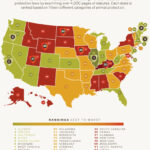The concept of animal rights as a legal framework has evolved remarkably over centuries, reflecting changing societal values and ethical considerations regarding sentient beings. At the inception of recorded history, animals were often regarded as property, devoid of rights or protections under the law. However, the burgeoning awareness of animal sentience has catalyzed a transformative journey in legislation aimed at curtailing cruelty and providing rights to non-human creatures.
The earliest documented recognition of animal welfare can be traced back to various ancient civilizations. In ancient Egypt, for instance, cats were venerated and protected; harming them was considered a criminal offense. Similar protective sentiments emerged in ancient India, where the doctrine of ahimsa advocated non-violence towards all living beings. However, it was not until much later that formal legal measures began to emerge in Western societies.
The advent of animal cruelty laws in the West can be pinpointed to the early 19th century. One of the quintessential milestones was the formation of the Royal Society for the Prevention of Cruelty to Animals (RSPCA) in 1824 in England. This organization marked a paradigm shift, embodying the growing public abhorrence of animal mistreatment during the Industrial Revolution, a time when animals were commonly exploited for labor, food, and entertainment. Initially established to combat the brutalities faced by working horses and other domesticated animals, the RSPCA was instrumental in advocating for legislative reforms. The Cruelty to Animals Act of 1835 was one of the first statutory measures addressing animal welfare directly, illuminating society’s increasing awareness of the moral obligation to protect vulnerable creatures.
As the 19th century progressed, similar movements began to manifest across Europe and North America, fueled by both humane sentiments and nascent scientific understandings of animal behavior and emotions. In the United States, the first animal protection law was enacted in New York in 1866, catalyzed by the same moral zeitgeist that spurred the formation of the American Society for the Prevention of Cruelty to Animals (ASPCA). These nascent laws, however, varied considerably in scope and enforcement, reflecting differing cultural attitudes towards animals and their rights.
Into the 20th century, the legal landscape of animal rights continued to evolve, albeit at a sluggish pace. The rise of factory farming and vivisection practices galvanized animal activists to push for more comprehensive legislation. Notable developments included the Animal Welfare Act of 1966 in the U.S., which set the framework for protecting pets and ensuring humane treatment in research. This Act is particularly significant as it was one of the first federal laws providing basic regulatory protection for certain animals, although it had its limitations, notably exempting farm animals.
The latter half of the 20th century saw an explosion of animal rights advocacy, propelled by the publication of significant literature and the formation of numerous activist organizations. The philosophical groundwork laid by thinkers such as Peter Singer and Tom Regan led to a heightened discourse surrounding animal rights, as opposed to mere animal welfare. Singer’s “Animal Liberation,” published in 1975, was pivotal in reshaping public consciousness, arguing for the inherent rights of animals to live free from suffering. This seismic shift in ideology began to permeate legal discussions, inspiring activists to advocate for comprehensive animal rights laws that went beyond welfare considerations.
Entering the 21st century, the global legal landscape has begun to reflect these ethically-driven changes. Numerous countries have enacted laws that recognize sentience and afford animals certain rights. For instance, in 2002, Switzerland became the first country to explicitly recognize animals as beings with their own rights, establishing a legal premise that mandates their protection from harm and suffering. Similarly, many countries in the European Union have adopted stringent regulations concerning animal welfare, reflecting a more progressive stance in nurturing a symbiotic relationship between humans and animals.
Nonetheless, despite these advancements, significant challenges persist. The dichotomy between animal welfare and animal rights continues to create rifts in the legal discourse. While welfare laws often aim to minimize suffering without fundamentally challenging the anthropocentric view of animal use, rights-based laws seek to obliterate the exploitation of animals altogether. The evolution of these laws thus often hints at deeper societal struggles regarding our ethical obligations to sentient beings.
Additionally, the proliferation of animal agriculture and the ongoing exploitation of wildlife raise pressing questions about the effectiveness of current laws. Activists argue that many existing statutes lack the necessary enforcement mechanisms and fail to cover all species equitably. The legal systems in place are frequently hamstrung by political interests and economic considerations, which often prioritize profit over compassion.
As society grapples with these pressing ethical concerns, the movement towards recognizing and codifying animal rights continues to grow, driven by an ever-expanding body of research elucidating the cognitive and emotional lives of animals. The intersection between legal, ethical, and social considerations underscores an essential truth: the evolution of animal cruelty laws reflects not only a legal journey but also a profound transformation of societal values. This ongoing struggle for justice reveals the intricacies of our connection to the natural world and the responsibility we bear to ensure a compassionate coexistence with all sentient beings.
In summary, the legal history of animal rights is a vibrant tapestry interwoven with ethical inquiry, activism, and evolving paradigms. From ancient law codes to contemporary legal protections, the journey towards recognizing and enforcing animal rights is emblematic of humanity’s gradual awakening to its moral imperatives. As we move forward, the hope remains that these laws will continue to evolve, shaping a more humane and just world for all creatures.







